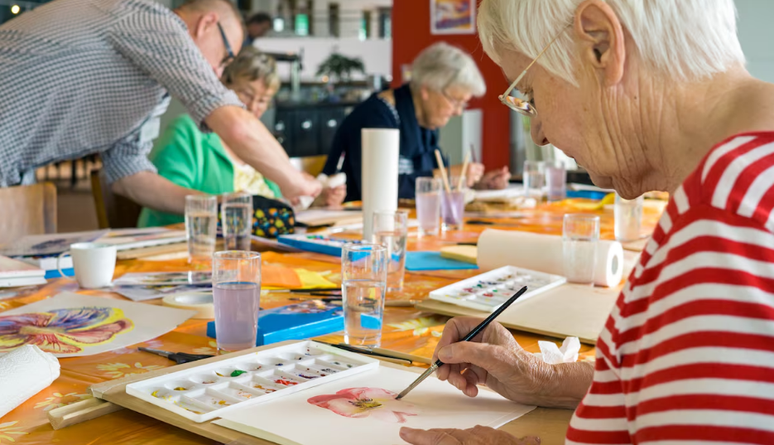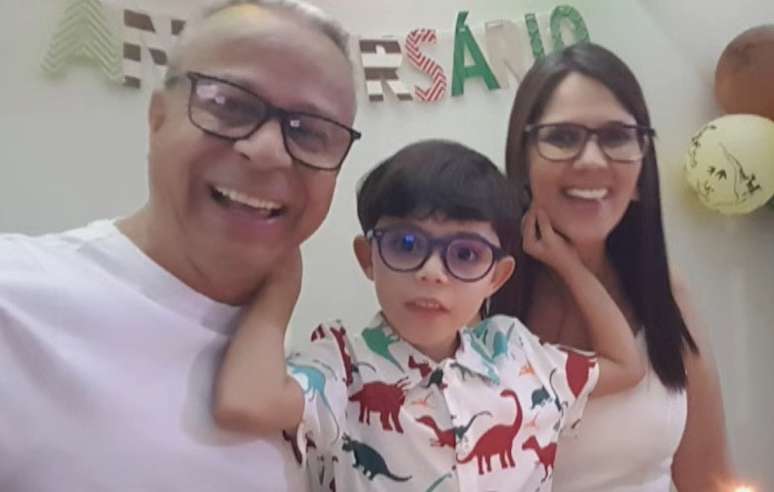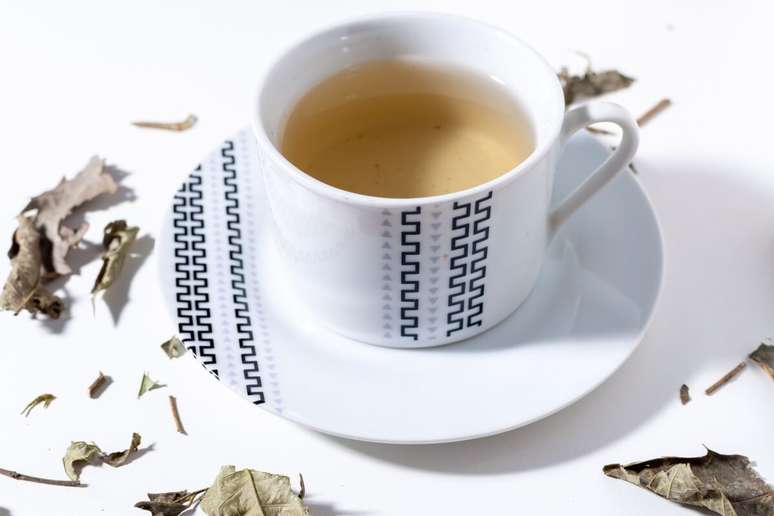The research underlines that collective programs of artistic expression promote well -being and can be an effective alternative to the use of medicines between mature and elderly adults
Painting, dancing, listening to music or participating in group artistic activities can be more than a hobby: it is an effective strategy to improve mental health of mature adults e elderly. This is what reveals a study conducted by Queen Mary University in London, recently published in the scientific journal Nature Mental Health.
The research analyzed 39 studies conducted in 21 countries, which involved 3,360 patients with depression and 949 with symptoms of anxiety. All participants were more than 55 years old and had no diagnosis of dementia. In 36 studies, scientists have studied the effects of artistic interventions on depressive symptoms; Another 10 analyzed the impacts on anxiety.
The results were clear: the practice of artistic activities – especially if performed in a group – has a positive effect on the relief of the symptoms of these conditions. The benefits were consistent in different types of art and between populations of various cultures.
For researchers, the main differential is in the shared experience and in the construction of social connections, which act as emotional support.
“This work brings solid tests that strengthen something that we have already observed in clinical practice: the importance of supplementary and creative approaches in mental health care and the formation of support networks that go beyond the exclusively biomedical model,” says the psychiatrist Luiz Gustavo Vala Zoldan of the Israeli hospital Albert Einstein.
In addition to the earnings of well -being, the study suggests that these interventions can represent an effective alternative to the use of medicine In some cases: a strategy that, according to experts, offers important advantages, especially in old age.
“This research shows that in these cases it is not always necessary to use drugs, which is positive because it reduces the cost of the treatment and avoids possible side effects that medicines can cause. This is particularly important in the case of the elderly, since many already use other medicines”, says Geriatra Miguel Quirino de Araújo, head of the Geriatric discipline of the Smofp’s Smo Paulo).
Artistic interventions promote more than leisure times: they act in multiple dimensions of the emotional and cognitive health of the elderly. According to the psychiatrist, these practices favor social life and reduce insulation, struggle loneliness and promote a sense of belonging and utility – essential factors for a aging greet. “In addition, the creative commitment activates the brain areas related to motivation and reward, which can improve mood and reduce anxious symptoms,” he explains.
The socialization provided by group activities also contributes to the individual, realizing that other people face similar challenges, but with different forms of comparison. This experience helps to move the focus of one’s suffering, allowing the commitment with experiences that generate pleasure, pride and motivation.
An relevant data of the study is that the effects of artistic interventions were even more significant among the elderly residents in long -term institutions, such as rest homes. “This can have two main reasons. In the first place, access is easier, since those who live in their residence must have the motivation to leave the house and think about transport in the site of the activities. In order not to mention the fact that in rest homes the prevalence of cases of depression is often higher, which helps to highlight the benefits”, says the UnifiP expert.
Frequency of activity
In order for the positive effects to be carried out, experts recommend that you meet meetings at least once a week, which last between 60 and 90 minutes and in small groups, which promotes interaction. The choice of activity should consider the physical and cognitive conditions of each participant, as well as their personal interests, guaranteeing a true involvement. The benefits are more intensely noted after three months of continuous participation.
Although, in general, artistic therapies have no absolute contraindications, the indication must be individualized. It is necessary to respect the limits of each elderlyness, ensuring that the activities are inclusive and safe. “If the elderly have balance problems, for example, dance may not be the best option. People with advanced cognitive difficulties, difficulties with pragmatism, delirium paintings, intense agitation or important physical limitations may need specific adaptations,” says the geriatrician.
It is also essential to evaluate the degree of clinical condition. In more serious cases of depression or anxiety, treatment should include drugs and psychotherapy, so that the patient has emotional and energy conditions to engage in activity. The performance of a multidisciplinary team usually improve the positive effects.
“Finally, it is noteworthy that, in addition to the impact on mental health, group artistic activities promote general well -being, stimulate cognition, strengthen the ties of the community and help to combat ethism/idadism, the prejudice against aging. Investing in these practices is to invest in public health, quality of life and active aging. It is a field that dedicates more attention and health care.
Source: Terra
Ben Stock is a lifestyle journalist and author at Gossipify. He writes about topics such as health, wellness, travel, food and home decor. He provides practical advice and inspiration to improve well-being, keeps readers up to date with latest lifestyle news and trends, known for his engaging writing style, in-depth analysis and unique perspectives.






-ts56r2epzzvq.png)


